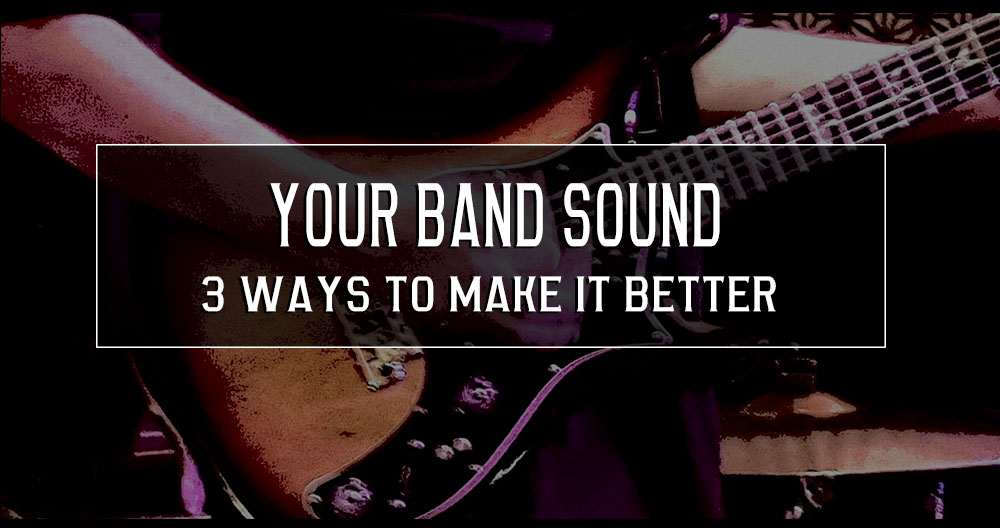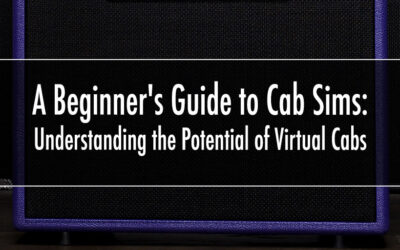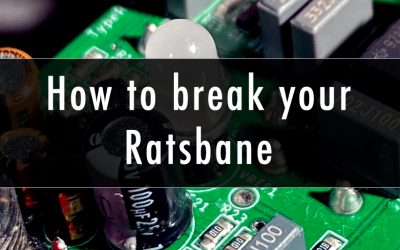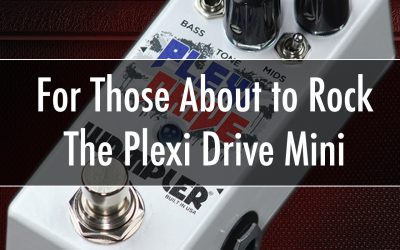
As regular readers of this blog will know, I’m what’s known as a ‘part time’ gigger, or a semi professional musician, or the type of person who sinks every spare penny into a hobby without any monies coming back in… pretty certain many of you can relate! I’ve been gigging now for about 30 years – including some time as a FOH sound engineer – within a variety of different styles of music. So, I thought I would take this moment to pass on some of the hard-earned knowledge I’ve picked up over the years and present it to you in a three-point checklist to make you sound better when you are playing live. I say hard-earned, because all of this was learned the hard way: by sounding pretty crappy before I sounded good (well, I hope I sound good, that’s what I tell myself anyway).
- Understand your EQ and how it changes with the room and the people in it
When we are sat at home, making our tones, or programming our tones, (or however we do it) we have to understand that the room we are in will sound and react differently to the one we end up playing in. It’s massively likely that this room is smaller, with a lower ceiling, with carpets and curtains, or softer chairs… basically, things that soak the sound up. When you go out into a gig situation, the room may well be different – in fact, I’d go out on a limb here and say that 99.9% of the time it will be the complete opposite. It’s likely to be MUCH bigger, with a higher ceiling and fairly sparse in terms of softer material to soak the sound up. You get what are known as ‘hard reflections’ coming back at you, from the hard floor, the back wall, windows, absolutely everywhere. Remember, sound waves are not transverse waves like the pictures we see of a nice sine pattern, but a longitudinal wave (think of a worm squeezing itself together and stretching out to move forward, rather than a sidewinder snake wiggling it’s way), so the pressure from the speakers is pushing the air in front of it in a certain direction. As the bass wave is longer, it will push further and as bass is omnidirectional, it will go everywhere.This will result in three things happening. The low end of your tone will travel much further than the highs (this is why when you are outside somewhere with loud music, you hear the bass through the walls – those long waves are almost unstoppable) and the high end could sound very shrill, or sharp. This leaves you in a dichotomy, as it appears you won’t be able to win. You can win, definitely, but you have to play wisely.A lot of players set their amp EQ to be a nice smiley face, because at home, that’s what sounds best when you are jamming along with a record (do we still say record? Maybe track?) and there will be nowhere else for your sound to go. As soon as you take that tone into a live situation, you will notice that without a suitable amount of mid-range, your tone will mush in with the bass guitar and the top end will pierce the ears of all those who stand before you. If that big ol’ room you are playing in isn’t full to the rafters straight off with people standing/dancing right in front of you, your tone will be lost.When you do your soundcheck, or line check, or level check (which ever you do), try to remember the space you are occupying with your tone. The low end is not necessary, so you need to drop it somewhat from what you had at home. The mid-range needs to be there as that’s what people hear – the human ear is trained to hear the frequencies of the human voice, so balance it at the point where it sounds full, but not woolly. Be very careful with your high end, it needs to sit right there on the top of the mid-range, but not attack the people at the back of the room like a drunken ninja looking to test their new Katana blade. As the room fills up, you may well be able to add a little more top end to your tone, but it’s unlikely you will need to if you balance it properly in the first instance.
Note – in a larger room, turn your reverb and delay levels down, they will just swamp your tone.
- Watch your ‘gain’ levels – consider stacking rather than using a full-on dirt pedal
When playing at home, it’s kinda hard to get that high-volume response from a gain pedal, or even a gainy amp, at lower sound levels. I fully expect there to be a mathematical or physics-based reasoning for that, but quite frankly there’s no need to go into it (translation – I don’t know). In order to make your guitar respond at lower volumes, you need to increase the ‘gain’ to replicate the feel. As you get louder (if you have even a slightly responsive amp), you will find that you can literally put your gain knob at almost halfway back to where you have it at home to get the same response… the same level of ‘alive’ under your fingers.If you like higher gain tones for your solos, it would definitely be worth considering two (or if you are silly like me, three – three is heavenly!) lower gain overdrives stacked up together to give you that tone, rather than a separate gain pedal for solos. This is a personal favourite of mine, the reasoning behind it is that your solo tones should ALWAYS be different from your rhythm tones (even the most foot stomping rock has surprisingly low gain in rhythm work) but at the same time, not too different unless the song calls for it, this is YOUR tone after all! The best way to achieve tonal stability in your sound is to take what you already have and add to it with an inherent EQ curve rather than a completely different tone. This is why TS pedals are so popular, as well as K style pedals. The midrange hump that they both provide don’t necessarily add a higher-level of gain to your signal, but boy does it feel like it. The power and response is increased beautifully… if you have a favourite pedal (for example, my current squeeze is the Plexi Drive Standard) and add a K style pedal with unity level, low gain and a higher level of treble/tone, your tone will fatten up and cut through. It’s like putting your amp on 6 instead of 4. If you put a TS with a similar setting between the two, your amp will sound and react like it is now on 8. Very little gain is being applied to the front end, but enough to make your end pedal, the one that creates your tone, ‘dirt up’ hugely… you’ll find that the harmonics and response within your playing will jump out at you as well. - Play into the spaces, don’t fill every gap you can find
In other words, learn when to shut up! This is the one that comes naturally to me as the first band I was in had two lead/rhythm guitar players, so everything was split pretty well 50/50 and we quickly became aware it sounded boring if we played the same thing. So, we used basic chord inversions to fill out the sound rather than duplicating. We also learned pretty quickly that, in order for the band to sound bigger, one of us had to stop playing at certain times. Because when the one who stopped came back in, the sound became huge. These days, the band I am in only has me on electric guitar, we do have an acoustic strummer type, but also quite often a keys or steel player sits in – and they exist in the same sonic space I do.When it’s just me, I often will play something to compliment the acoustic player as he just strums on regardless. So, I will use a different inversion of the chord, or an arpeggiated strum line thing at the start of the bar, or maybe a complimentary line with the bass player. When the song hits the chorus, I come in properly and the band sounds bigger. When playing alongside a keys or steel player, I tend to sit back even further, giving them the room to fill those spaces and they do the same so, when we are all in there, the sound (the ‘width’ of the band) increases dramatically.That phrase is the key to this – “leave the spaces clear”. Consider your band sound to be like taking a road trip in a car. If you have four people in the car it’s comfy and you all have the room to do what you want to do, if you put a fifth person in the car with you, space is limited so you all adjust to the situation. It’s the same with the band, as soon as someone is in there and occupying the same space as you are, you HAVE to adjust what you are doing, or it will feel very crowded very quickly.So, there are three small hints for you to take to your next gig, rehearsal, get together etc. Just remember, you don’t need all that gain, you probably don’t need all that low end and don’t be afraid to shut up now and then to increase the dynamics of the band you are in!!
Some sneaky geeky tips:
- When setting up your PA and the room is boxy, or you are on the stage, consider putting the PA speakers on the floor rather than the stage. Or if they are on the stage, try to get the top cabs slightly pointing downwards. If they are too far above the heads of the people who are in the audience, the sound will fly straight to the back wall and back towards you, and so your nightmare begins!
- Try to never put your PA speaker against a wall. If it is flush with a wall, the bass end from that speaker could be increased by up to 6db.
- If you put your amp on the floor and you not on a stage, your amp is playing to your legs and you’ll have to have it much louder for you to be heard. If the room is emptier than you’d prefer, by the time your sound hits the back of the room, you are likely to be considerably louder than the band.
- If you are using a 2×12” cab for your guitar, also consider bringing your cab up off the floor. The bass response from the floor makes a difference as per above, and if you have the cab up off the floor, you can lift your sound up away from people’s legs. Dependent on the room and whether or not I’m mic’d up, I sometimes have my 2×12” running horizontally as it fills my part of the stage up perfectly. If I am not mic’d up, I will run it vertically (with the best sounding speaker at the top) so the sound flies around the head height of people, as rumour has it that is the place where you hear stuff best!!
- Here’s something that may well blow your mind a little, where you place your P.A. bass bins and your top boxes could mean they are out of synch. If your top box is on a pole that sits in the bass bin, your sound will hit the audience at the same time. If your top box is on a tripod and the bass bin is sitting in front of it (so about a yard in front) your bass frequencies will hit your audience about 3ms before your top end. If your top box is on a tripod on the stage and the bass bins are on the floor in front of the stage (about 2 yards in front), the bass will hit the audience about 6ms before. It may not seem like much, but once you know this, you KNOW it!



0 Comments